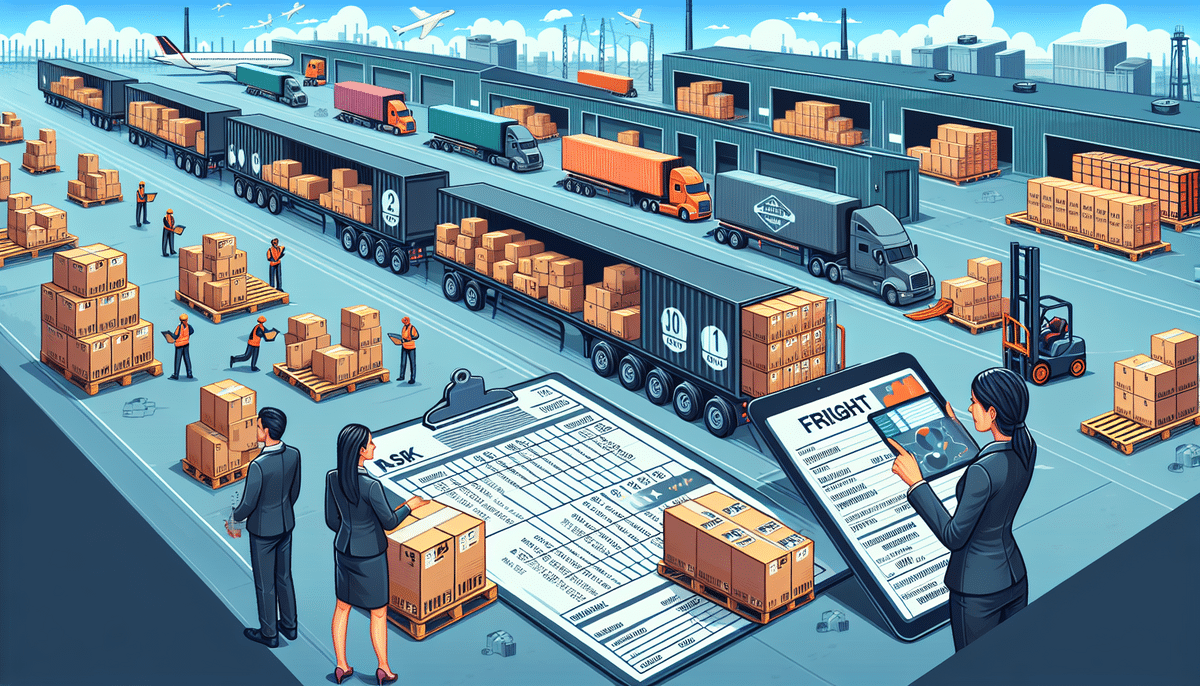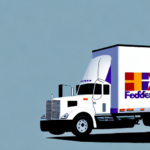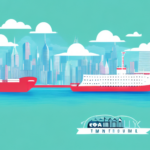What Is Less-than-Truckload (LTL) Shipping?
Less-than-truckload (LTL) shipping refers to the transportation of freight shipments that do not require a full truckload. This means that the shipment does not take up the entire trailer, hence the term "less-than-truckload." LTL shipping is a cost-effective and efficient shipping method for small shipments, allowing multiple customers to consolidate their freight into one trailer and share the cost of transportation. According to the ShipScience, LTL shipping accounts for approximately 60% of all truckload shipments in the United States, highlighting its significant role in the logistics industry.
Understanding the Concept of LTL Shipping
To understand LTL shipping, it is important to first grasp how the shipping industry operates. Freight carriers charge for their services based on the weight and volume of the shipment, as well as the distance it needs to travel. For small shipments that do not require a full truckload, shipping them individually can be costly and inefficient. This is where LTL shipping becomes advantageous. Instead of shipping small shipments separately, LTL carriers group shipments from multiple customers into one trailer, creating a shared truckload that is more cost-effective as the transportation costs are distributed among all contributing customers.
Another benefit of LTL shipping is the increased flexibility in scheduling. Since LTL carriers consolidate shipments from various customers, they can offer more frequent departures and arrivals. This regularity aids businesses in managing their inventory more effectively and enhances customer satisfaction by ensuring timely deliveries.
However, LTL shipping also presents certain drawbacks. The consolidation of shipments increases the risk of damage or loss, as goods are handled multiple times during transit. Additionally, LTL carriers may have longer transit times due to the multiple stops and transfers required to deliver all shipments in a trailer. It is crucial for businesses to weigh the pros and cons of LTL shipping to determine if it aligns with their specific shipping needs.
How Does LTL Shipping Work?
When utilizing LTL shipping, a shipper books a shipment with an LTL carrier. The carrier then coordinates with other shippers to fill a trailer with multiple shipments. Once the trailer is full, it departs for the destination terminal. At the terminal, shipments are sorted and dispatched to the appropriate delivery trucks, which then deliver the shipments to their final destinations. The cost of LTL shipping is determined by the weight, volume, and distance of each shipment. Additionally, LTL carriers often offer various supplementary services such as liftgate delivery, inside delivery, and white glove service for an extra fee.
A key advantage of LTL shipping is that it allows small businesses to ship their products without bearing the cost of an entire truckload. This affordability is supported by LTL carriers' extensive network of terminals and delivery trucks, enabling access to more remote areas and facilitating broader market reach. However, it is essential for shippers to properly package their shipments to minimize the risk of damage during transit, as goods share space with other shipments within the trailer.
Benefits of LTL Shipping for Small Businesses
LTL shipping can be an excellent option for small businesses with smaller shipping volumes or shipments that do not require an entire truckload. The benefits of LTL shipping include:
- Cost Savings: By sharing transportation costs with multiple shippers, LTL shipping is often more cost-effective than full truckload shipping or shipping small shipments individually.
- Flexibility: LTL carriers provide a variety of services and delivery options, allowing businesses to tailor their shipping to their specific needs and budget.
- Tracking: Most LTL carriers offer tracking services, providing visibility and transparency throughout the transportation process.
- Reduced Damage: LTL shipments are generally less susceptible to damage as they are handled less frequently and pass through fewer terminals and trucks.
Additionally, LTL shipping can help small businesses reduce their carbon footprint. By sharing truck space with other shippers, LTL shipping decreases the number of trucks on the road, which in turn reduces emissions and traffic congestion. This sustainability aspect can be a compelling selling point for environmentally conscious customers.
Factors to Consider When Choosing an LTL Carrier
When selecting an LTL carrier, consider the following factors to ensure you choose the best fit for your shipping needs:
- Service Offerings: Different LTL carriers offer varying services and delivery options. It's essential to select a carrier that aligns with your specific requirements.
- Transit Time: Transit times can vary between carriers. Choose one that can deliver your shipment within your desired timeframe.
- Carrier Reputation: Research carrier reviews and ratings to ensure you are partnering with a reputable carrier with a strong track record.
- Price: While cost is a significant factor, it should not be the sole consideration. The cheapest option may not always provide the best service quality.
Another critical factor is the carrier's coverage area. Ensure that the carrier you choose can deliver to the locations you need, whether within a specific region or nationwide. Some carriers may have limited coverage areas, while others offer extensive networks. Selecting a carrier with adequate coverage ensures that your shipping needs are met efficiently.
Comparing LTL Shipping with Full Truckload (FTL) Shipping
LTL shipping is often compared to full truckload (FTL) shipping. While both methods involve transporting freight by truck, there are several key differences:
- Cost: FTL shipping is generally more expensive than LTL shipping since the entire trailer's cost is borne by a single shipper.
- Volume: FTL shipping is ideal for large shipments that occupy a full trailer, whereas LTL shipping is better suited for smaller shipments that do not require an entire trailer.
- Flexibility: LTL carriers offer greater flexibility in terms of services and delivery options, while FTL carriers typically operate on a fixed schedule with limited delivery options.
Tips for Reducing Costs in LTL Shipping
Here are some strategies to minimize costs in LTL shipping:
- Consolidate Shipments: Combining multiple shipments into one can reduce shipping costs as the expenses are shared among all participating shippers.
- Avoid Accessorials: Refrain from using additional services like liftgate delivery or inside delivery unless necessary, as they can increase shipping costs.
- Improve Packaging: Proper packaging reduces the risk of damage, which can lead to additional fees. Investing in quality packaging materials can lower overall costs.
- Shop Around: Compare rates and services from various LTL carriers to find the most cost-effective option that meets your needs.
Common Challenges in LTL Shipping and How to Overcome Them
LTL shipping presents several challenges, including delivery delays, shipment damage, and miscommunication between shippers and carriers. To address these challenges:
- Communicate Clearly with the Carrier: Provide accurate information about the shipment, including weight, dimensions, and delivery location, to ensure smooth processing.
- Choose a Reputable Carrier: Select carriers with positive reviews and a proven track record of timely and undamaged deliveries.
- Package the Shipment Properly: Use appropriate packaging materials and techniques to minimize the risk of damage during transit.
- Monitor the Shipment: Utilize tracking tools to keep an eye on the shipment's progress and promptly address any delays or issues.
Types of Freight That Can Be Shipped Using LTL Carriers
LTL carriers are versatile and can handle various types of freight, including:
- Palletized shipments
- Crated shipments
- Boxed shipments
- Machinery
- Raw materials
- Consumer packaged goods
- Furniture
- Electronics
Best Practices for Preparing and Packaging Your Freight for LTL Shipping
Proper preparation and packaging are crucial to ensure the safety and integrity of your freight during transit. Follow these best practices:
- Choose Appropriate Packaging Materials: Use sturdy boxes, crates, or pallets capable of withstanding the weight and pressure from other shipments.
- Secure the Shipment: Utilize proper strapping, shrink wrap, or padding to secure the shipment and prevent movement or shifting during transportation.
- Label the Shipment: Clearly label the shipment with the recipient's name, address, contact information, as well as the weight and number of packages.
- Communicate with the Carrier: Provide accurate information about the shipment and any special instructions or requirements to ensure proper handling.
How Technology is Changing the Landscape of LTL Shipping
Technology is revolutionizing the LTL shipping industry, enhancing efficiency and improving the customer experience. Key technological advancements include:
- Online Booking: Customers can now book and manage their LTL shipments online, streamlining the shipping process and providing greater convenience.
- Real-time Tracking: LTL carriers offer real-time tracking tools that allow customers to monitor their shipments throughout the transportation process, providing transparency and peace of mind.
- Automated Billing: Automated billing systems simplify the invoicing process, reducing errors and improving financial accuracy.
- Route Optimization: Advanced algorithms and software enable LTL carriers to optimize their routes, reducing transit times and lowering transportation costs.
Case Studies: Real-life Examples of Successful Implementation of LTL Shipping
Here are some real-life examples of businesses successfully implementing LTL shipping:
- Small E-commerce Business: An online retailer consolidated its shipments using LTL shipping, reducing shipping costs by 30% while maintaining timely deliveries.
- Manufacturer: A manufacturing company used LTL shipping to transport raw materials from multiple suppliers to its facility, resulting in lower transportation costs and improved supply chain visibility.
- Furniture Retailer: A furniture retailer leveraged LTL shipping to deliver products to multiple customers across the country, enhancing delivery times and boosting customer satisfaction.
Future Trends in the LTL Shipping Industry
The LTL shipping industry is continually evolving, with several emerging trends shaping its future:
- Increased Use of Technology: LTL carriers are adopting new technologies to enhance efficiency, streamline operations, and improve the customer experience.
- Greater Focus on Sustainability: Carriers are implementing sustainable practices such as fuel-efficient vehicles and eco-friendly packaging to minimize their environmental impact.
- Growing Demand for E-commerce Fulfillment Services: The surge in e-commerce is driving demand for LTL carriers to provide comprehensive fulfillment and last-mile delivery services.
- Expansion of Global Trade: LTL carriers are expanding their services to include international shipping, offering businesses opportunities to enter and compete in global markets.
In conclusion, LTL shipping is a cost-efficient and flexible shipping method that can significantly benefit businesses of all sizes. By understanding the fundamentals of LTL shipping, how it operates, and the factors involved in selecting the right carrier, businesses can optimize their shipping strategies and reduce transportation costs. With technology playing an increasingly pivotal role and new trends shaping the industry's future, LTL shipping continues to be an essential component of modern logistics.






















